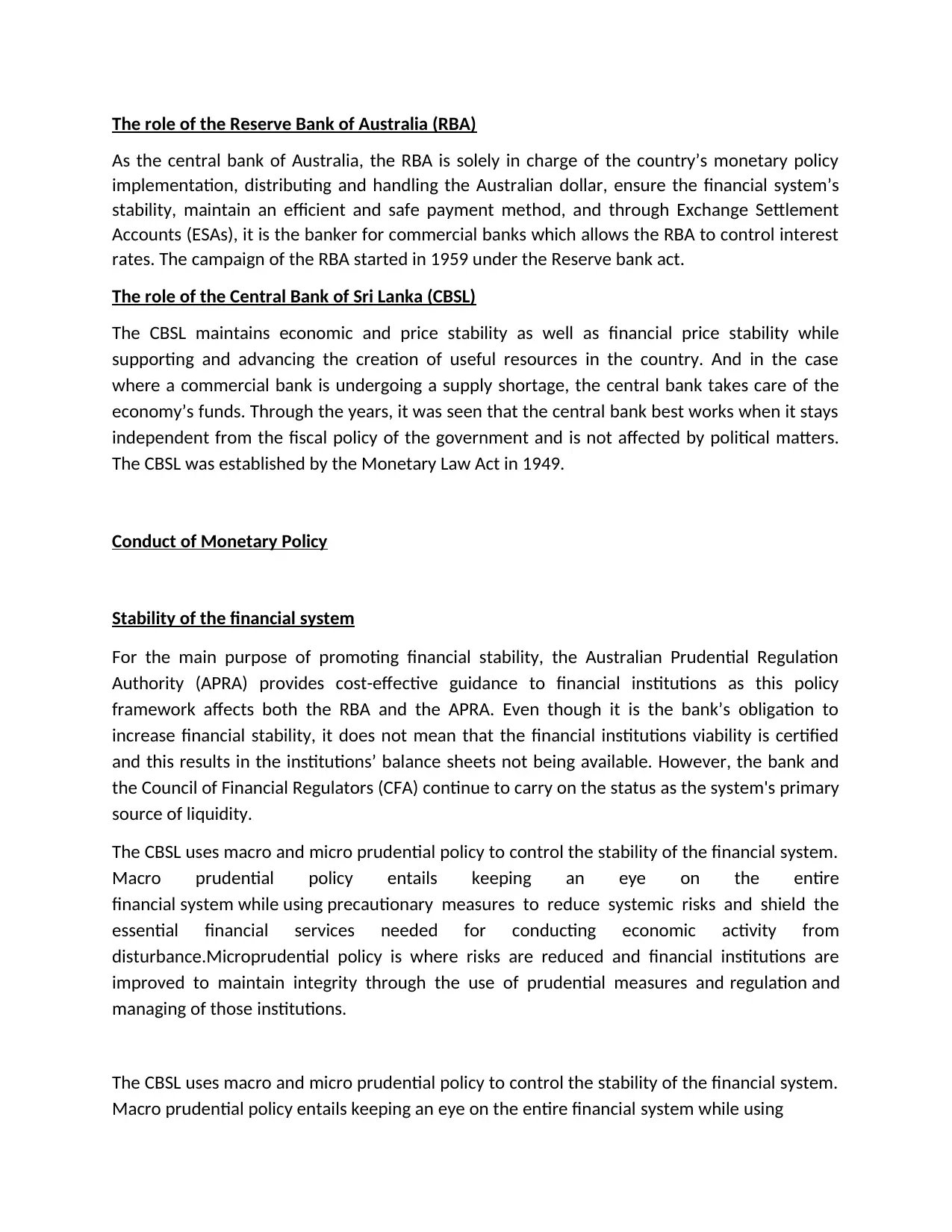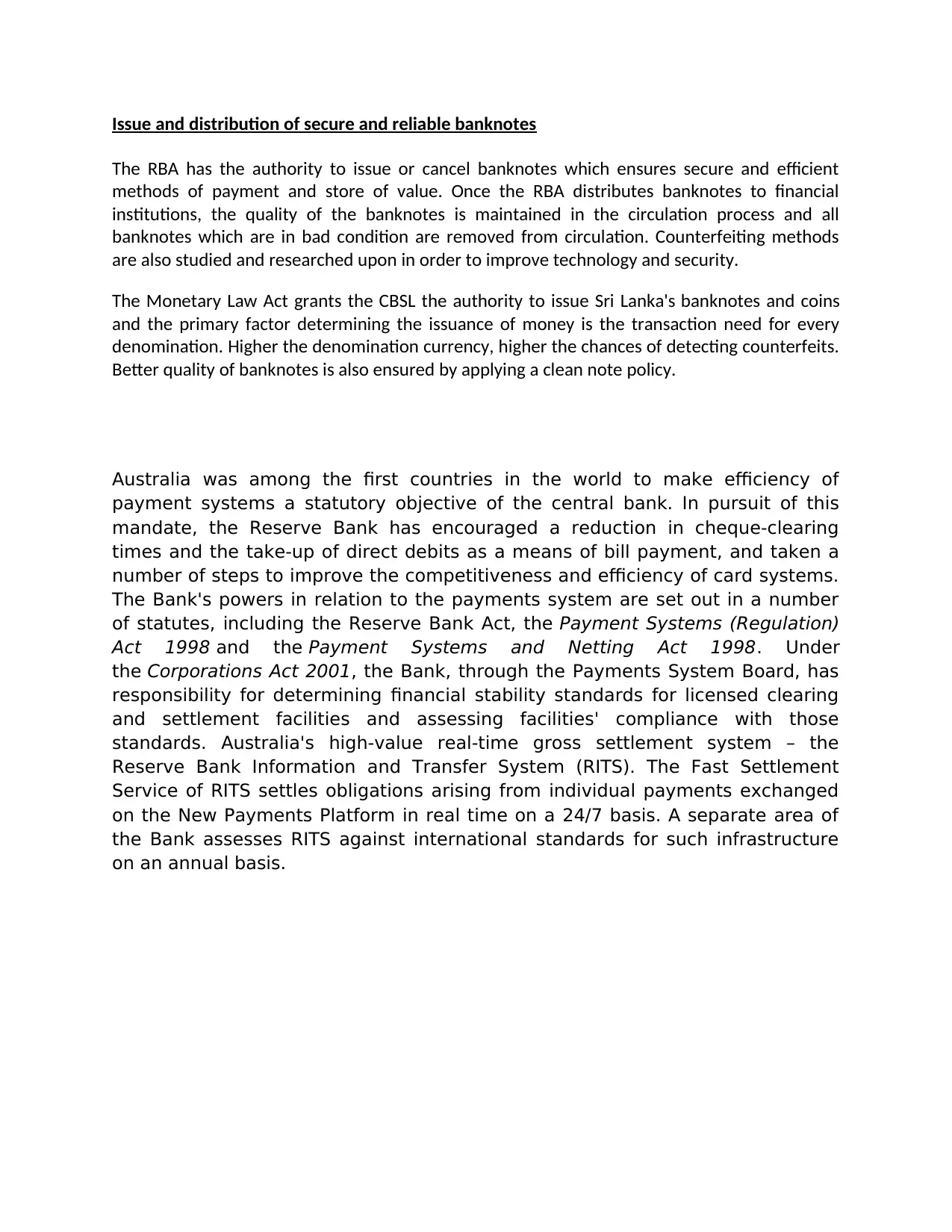Comparative Analysis: RBA and CBSL Monetary Policy Roles
VerifiedAdded on 2023/01/13
|2
|772
|54
Report
AI Summary
This report provides a comparative analysis of the Reserve Bank of Australia (RBA) and the Central Bank of Sri Lanka (CBSL), focusing on their roles in monetary policy, financial stability, and payment systems. The report explores the RBA's responsibilities, including monetary policy implementation, handling of the Australian dollar, ensuring financial system stability, and managing payment methods. It also details the CBSL's objectives of maintaining economic and price stability and supporting resource creation. The report further examines the conduct of monetary policy, including the roles of the Australian Prudential Regulation Authority (APRA) and the use of macro and micro prudential policies by the CBSL. The issuance and distribution of secure banknotes by both banks, along with their approaches to payment systems, including Australia's RITS and the CBSL's efforts, are also discussed. This analysis highlights the similarities and differences in their approaches to maintaining economic stability and efficient financial systems.
1 out of 2








![[object Object]](/_next/static/media/star-bottom.7253800d.svg)